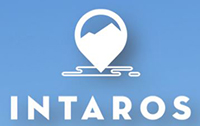
Scripps Institution of Oceanography (https://scripps.ucsd.edu) is one of the oldest, largest, and most important centers for marine and earth science research, graduate training, and public service in the world. It was founded in 1903. Research at Scripps now encompasses physical, chemical, biological, geological, and geophysical studies of the oceans. Scripps staff numbers approximately 1,300. More than 300 research programs may be under way at any time, including studies of air-sea interactions, climate prediction, earthquakes, biodiversity in marine ecosystems, marine chemistry, beach erosion, the marine food chain, marine genomics, the geological evolution of the ocean basins, and the multidisciplinary aspects of global change and the environment. In its most recent survey of U.S. graduate schools, the U.S. National Research Council ranked Scripps the number one oceanographic program in faculty quality, distinction, and scholarly publications. Scripps operates a fleet of four ships and the platform FLIP for oceanographic research. Cruises range from local, limited-objective trips to far-reaching expeditions in the world's oceans.
The scientists and technical staff within the Acoustical Oceanography Group at SIO have played a leading role in the development of ocean acoustic tomography, including the development and deployment of the required instrumentation, since the method was introduced by W. Munk and C. Wunsch in the late 1970s. The Acoustical Oceanography Group has conducted numerous experiments applying the technique to oceanographic and acoustic problems in the North Pacific, North Atlantic, and Arctic Oceans. It has been involved in the tomographic work in Fram Strait, including the DAMOCLES, ACOBAR, and UNDER-ICE projects. SIO brings first class expertise in tomographic technology and methodology that they have built up over many years.
Role in the project
SIO will participate in WP2 in all aspects of the analysis of the active and passive acoustic data collected in various recent and ongoing experiments in the Arctic, including the experiments in Fram Strait led by NERSC (DAMOCLES, ACOBAR, UNDER-ICE) and the experiments led by SIO in the central Arctic (THAAW) and the Canada Basin (CANAPE). SIO anticipates contributing to the initial processing of the acoustic data (signal processing, mooring motion and clock corrections, ray and mode beamforming), to the subsequent inversion of the data to obtain ocean temperatures, and to the use of the data to test and constrain high-resolution ice-ocean models.
Regents of the University of California
University of California
Scripps Institution of Oceanography
U.S.A.
